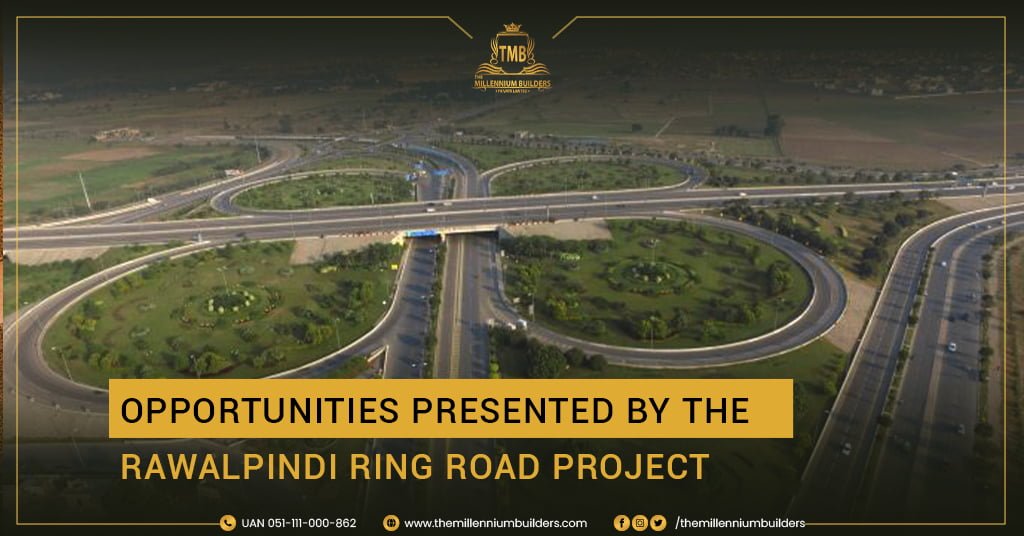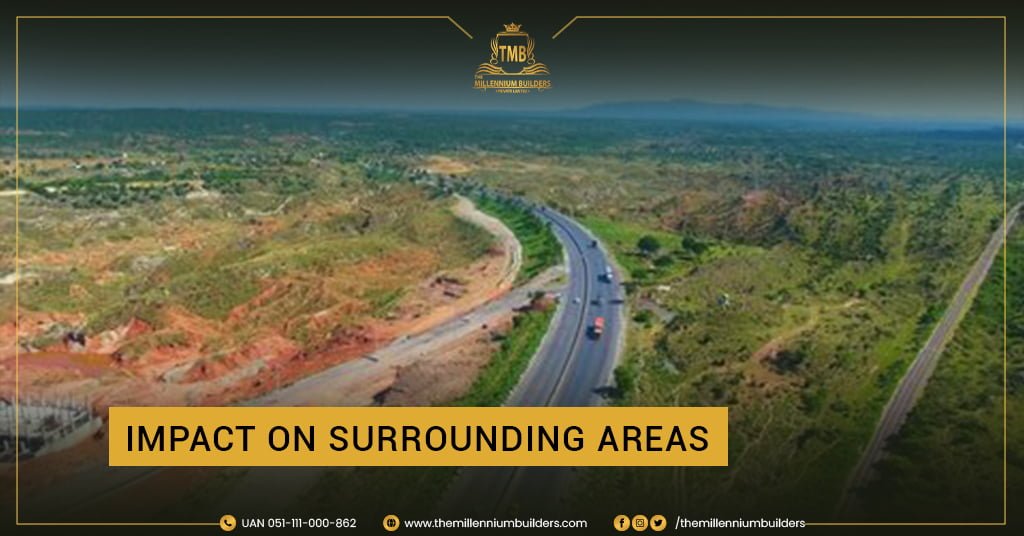The Rawalpindi Ring Road is a highly anticipated infrastructure project in Pakistan that aims to connect the cities of Rawalpindi and Islamabad. This 38.3-kilometre orbital highway will not only ease traffic congestion in the Islamabad-Rawalpindi metropolitan area but also provide a multitude of opportunities for economic growth and real estate development.
In this comprehensive guide, we will delve into the various aspects of the Rawalpindi Ring Road project, including its history, current status, opportunities, challenges, and impact on the surrounding areas.

It was first proposed by the government of Nawaz Sharif in 1991 to construct the Rawalpindi Ring Road. The project never came to fruition, though, because of political instability. During Shahbaz Sharif’s visit to China as Punjab chief minister in 2010, the project was negotiated jointly by Pakistani and Chinese officials. Funding for the project was sought from the Asian Development Bank in 2017.
The project gained further momentum when work on the highway began in March 2022. However, political and economic uncertainties have caused delays in the project’s completion, as the provincial administration has faced challenges in hiring foreign consultants and acquiring the necessary funds.
Spanning a length of 38.3 kilometers, the Rawalpindi Ring Road will connect Channi Sher Alam Bridge near Rawat to Thalian Interchange close to the Lahore-Islamabad Motorway. The highway is currently under construction, and it is expected to have six lanes upon completion.
A metropolitan area comprising the twin cities of Islamabad and Rawalpindi, Islamabad-Rawalpindi ranks third in terms of population in Pakistan. The Rawalpindi Ring Road project aims to ease traffic flow in this region by providing a seamless connection between the major business centers of the nation.

The Rawalpindi Ring Road project presents a bundle of opportunities for various stakeholders, including residents, businesspeople, and investors.
One of the primary benefits of the Rawalpindi Ring Road will be improved traffic flow and reduced travel time for commuters in the Islamabad-Rawalpindi metropolitan area. The new highway will allow vehicles to bypass the congested main city area of Rawalpindi, reducing delays and enhancing overall transportation efficiency.
With the construction of the Rawalpindi Ring Road, neighboring housing societies will benefit from easier access to the New Islamabad International Airport and Thalian Interchange Lahore-Islamabad Motorway.
The Rawalpindi Ring Road will serve as a vital link connecting major economic centers in Pakistan, including Torkham, Peshawar, Karachi, and Lahore.
The real estate sector in the vicinity of the Rawalpindi Ring Road is expected to witness significant growth due to the project’s completion. This will open up new opportunities for both residential and commercial real estate development.
The Rawalpindi Ring Road project also plans to incorporate the China-Pakistan Economic Corridor (CPEC) route, providing additional economic opportunities for the region. Several economic zones are expected to be developed along the highway, further boosting the local economy.
You may also like this post: Lake View Park Islamabad

Despite the numerous opportunities presented by the Rawalpindi Ring Road project, it has faced its fair share of challenges and controversies.
The project has been plagued by political and economic uncertainty, including delays in securing funding and hiring foreign consultants. The shortage of dollars in the country has also posed a challenge in acquiring the necessary funds for the project’s completion.
The Rawalpindi Ring Road project has faced challenges in acquiring land for its construction. In 2021, the project’s competitive bidding process was halted due to allegations of route changes made to benefit private developers and public officials. This led to investigations by the National Accountability Bureau and the resignation of the Senior Advisor to the Prime Minister, Zulfi Bhukari.
As with any large-scale infrastructure project, the Rawalpindi Ring Road has raised concerns about its potential impact on the environment. There is a need for comprehensive environmental assessments and mitigation measures to ensure that the project does not adversely affect the surrounding ecosystems.

The Rawalpindi Ring Road project is expected to have a significant impact on the surrounding areas, particularly in terms of real estate development and economic growth.
The completion of the Rawalpindi Ring Road is anticipated to boost the real estate sector in the vicinity of the highway. The improved connectivity and access to facilities will make the area more attractive for both residential and commercial real estate development.
The Rawalpindi Ring Road project will foster economic growth in the region by providing seamless connectivity between major economic centers in Pakistan. The development of economic zones along the highway and the integration of the CPEC route will further contribute to the local economy’s expansion.
While the Rawalpindi Ring Road project has faced its fair share of challenges and delays, its completion holds the promise of significant benefits for the Islamabad-Rawalpindi metropolitan area. Improved traffic flow, reduced travel time, increased access to facilities, and inter-city connectivity are just a few of the many opportunities presented by the project.
However, it is crucial for the project’s stakeholders to address the challenges and controversies effectively and transparently. This includes securing the necessary funding, resolving land acquisition issues, and ensuring that the project does not have a detrimental impact on the environment.
The official opening date for the Rawalpindi Ring Road has not yet been announced. However, stakeholders and the general public are eagerly anticipating its completion. Discussions and debates have also arisen regarding the project’s alignment, emphasizing the need for effective and transparent resolution of concerns.
The Rawalpindi Ring Road is a visionary infrastructure project that promises to revolutionize connectivity, stimulate economic growth, and transform the landscape of Rawalpindi and its surrounding areas. With its numerous benefits, including reduced congestion, improved access to amenities, and enhanced opportunities for development, this road network is set to become a catalyst for progress. As the project nears completion, it holds the promise of a brighter future, where the residents of Rawalpindi can experience a seamless and efficient

Manahil Tariq, A content writer and copywriter with over 2 years of experience Throughout my career, I have worked with a diverse group of clients from around the world. I also work with real estate firms and marketing agencies. Writing is where my skills and expertise really shine.
Suite #06, 2nd Floor, Block D, Spring North Commercial Bahria Town Phase 7, Islamabad
First Floor, Sea View Hotel, Javed complex, Airport road, Gawadar.
Suite# 1 , 24069 Ryan Rd, Warren, 48091, Michigan USA.
Laffinge straat 8400,oostende-Belgium.
1023 Parsons Road SW Edmonton AB T6X0X2. +1 (780) 709-4405 (only Whatsapp)
2024 © Copyright The Millennium Builders (PVT) Ltd.